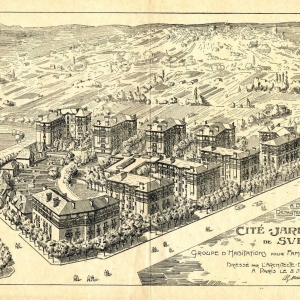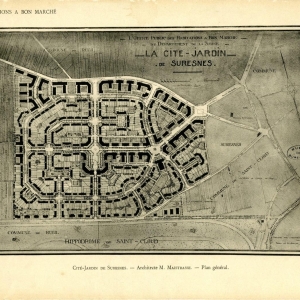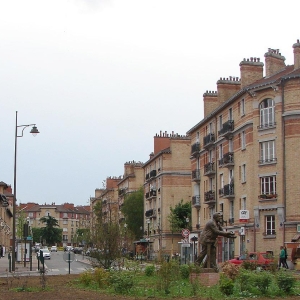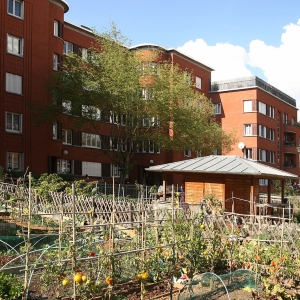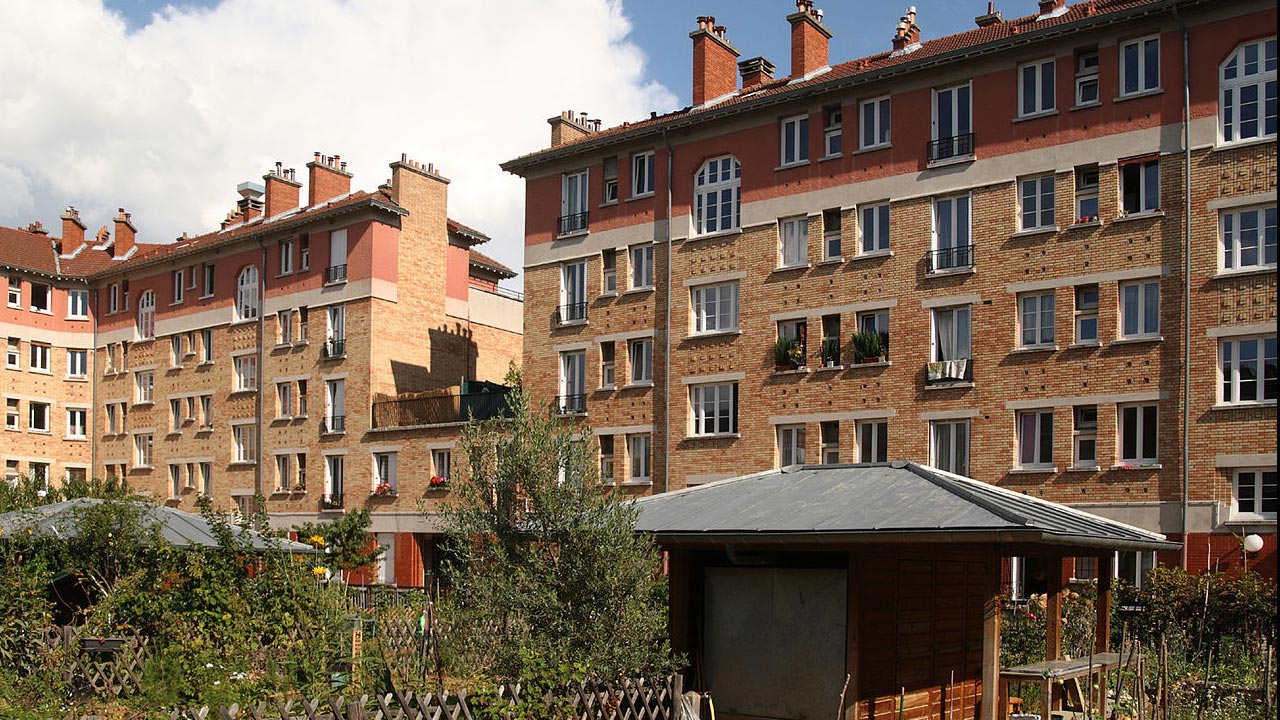
Cité-jardin de Suresnes
Paris, France
The Garden City of Suresnes is one of the largest garden cities in the region of Île-de-France.
| Garden City Type: | Mixed (housing association / municipality / other) |
| Country: | France |
| City: | Paris |
| Years of construction: |
1921 Start construction 1956 Completion
|
| Initiator/client: | Henri Sellier |
| Architect or related: |
Alexandre Maistrasse Alexandre Maistrasse (December 11, 1860 - November 17, 1951) was a French architect. Garden city Suresnes is probably his most famous work. Alexandre Maistrasse on Wikipedia [in French] Julien Quoniam Julien Quoniam assisted Alexandre Maistrasse from 1927 at Suresnes. Félix Dumail Félix Dumail (October 18, 1883 - April 27, |
| Heritage status: | Yes |
| Explanation: | Suresnes is a Site patrimonial remarquable (Remarkable heritage site). |
| General condition of Garden City: | Good condition |
General description
Henri Sellier, mayor of Suresnes from 1919 to 1941 and delegated administrator of the OPHBM (Office Public d'Habitations à Bon Marché, the Office of Affordable Housing) of the Seine, decided in 1915 to build a garden city in Suresnes. Its construction was entrusted in 1917 to architect Alexandre Maistrasse, who from 1927 on was assisted by Julien Quoniam. From 1938 onwards architect Félix Dumail was in charge.
Architecture / Urban planning
Maistrasse designed a plan in which four-storey apartment blocks stood side by side with detached pavilions. This mix of individual and collective housing and residences, for every family situation and every age of life, made it possible for residents to spend their entire lives within the neighbourhood. The accommodations remained rentals until the end of the 20th century, when the first houses went on sale.
The center of the main blocks of the garden city have squares planted with trees and are lined with lawns. The green Léon Bourgeois square lies at the heart of the settlement. Allotment gardens were created in the 2000s.
The garden city today has approximately 3,300 housing units, including 170 pavilions, as well as numerous facilities: several schools, a leisure center, wash baths and showers, child hygiene center, residences for the elderly, housing for singles, several places of worship, shops, etc. Inaugurated in 1938 , the Albert Thomas leisure center – later named Théâtre Jean-Vilar – made it possible to offer the population popular educational and cultural activities.
Sources
- Website URL
- Website URL
Cité-jardins de Suresnes at Association Régionale des Cités-Jardins d’Île-de-France
- Website URL
Suresnes at Musée d'Histoire Urbaine et Sociale de Suresnes [in French]



